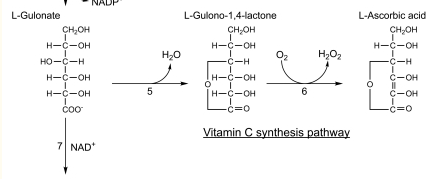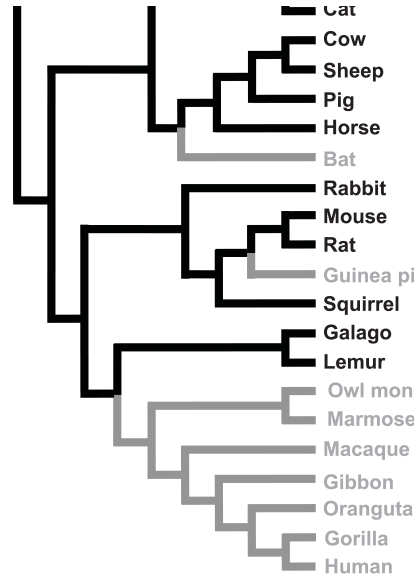
Practical Food Safety


.
Your body depends on six groups of essential nutrients, and each is vital for growth, development and continuing health.
Vitamins. Vitamins are organic — derived from living matter — compounds your body needs in small amounts to function properly. …
Minerals. …
Protein. …
Fats. …
Carbohydrates. …
Water.
Your body makes many of the nutrients, known as non-essential, that it needs to carry out its functions. Some nutrients, however, can’t be made rapidly enough — or at all — to meet daily needs; these are called essential nutrients.
They must be obtained from outside sources, such as food or supplements. Your body depends on six groups of essential nutrients, and each is vital for growth, development and continuing health.
Vitamins
Vitamins are organic — derived from living matter — compounds your body needs in small amounts to function properly. Because your body can’t make these nutrients, you must get them from food or supplements. Vitamins play an important role in digestion, and they’re crucial for body function regulation. Vitamins exist in two forms — fat soluble, which include vitamins A, D, E and K, and water soluble, which include the B-complex vitamins and vitamin C. To consume a wide variety of vitamins, include fresh fruits and vegetables, whole grains, low-fat milk, fish and eggs in your daily food plan.
Minerals
Minerals are inorganic compounds that your body is unable to manufacture. They help regulate body processes, and each one plays a particular role in your body’s proper functioning. Your diet must provide 16 minerals to maintain optimum health. They come in two categories: Macro minerals — sodium, potassium, chloride, calcium, phosphorus, magnesium and sulfur — are needed in larger quantities by your body, while trace minerals — iron zinc, iodide, selenium, copper, fluoride, chromium, molybdenum and manganese — are required in smaller amounts. Include mineral-rich foods like fruits, vegetables, whole-grains, nuts and fortified low-fat milk in your diet.
Protein
Protein is a component of every cell, and your body uses it to build and repair tissues. Protein is made from amino acids, but your body is unable to produce all of them. Dietary protein, therefore, becomes the main source of these essential amino acids. Fish, lean meat, poultry, eggs and cheese are complete proteins, meaning they contain all the necessary amino acids. Incomplete proteins, such as grains, legumes, nuts and seeds, should be eaten in a wide variety to ensure you consume all necessary amino acids
Fats
Your body requires monounsaturated and polyunsaturated fats, including omega-3 fatty acids, to maintain optimal health. Monounsaturated and polyunsaturated fats improve blood cholesterol levels, reduce inflammation and stabilize heart rhythms, says Harvard School of Public Health. Specifically, omega-3s are necessary for proper blood clotting and development of your brain’s cell membranes. These fatty acids also help protect against heart disease, cancer and stroke. Include foods that contain good fats, such as salmon, tuna, olive oil, canola oil, flaxseed, walnuts and almonds in your daily food plan.
Carbohydrates
Your body doesn’t manufacture carbohydrates, but they are broken down during digestion to provide fuel for physical activities and energy for proper body functions. Your nerves, muscles and brain depend on the energy provided by carbohydrates. According to Harvard School of Public Health, processing whole grains into refined foods, including white bread, sweets and white rice, removes minerals, fatty acids, as well as fiber, which results in foods that produce higher spikes in blood sugar than whole grains. Choose complex carbohydrates such as whole-grain breads, pasta and cereals, nuts, beans, lentils, peas and potatoes.
Water
Water makes up more than 60 percent of your body weight, according to MayoClinic.com. Your body’s daily fluid requirement exceeds what your body can make through processes such as digestion. Because you must supply your body with enough water to keep it functioning properly, it’s considered an essential nutrient. Water carries other nutrients and oxygen to cells, transports wastes away from cells, regulates body temperature and helps keep muscles and skin toned. Although individual water requirements vary, MayoClinic.com recommends drinking at least eight 8-ounce glasses of fluid a day.
Humans cannot synthesize vitamins A, B1 (thiamine), B2 (riboflavin), B5 (pantothenic acid), B6 (pyridoxine), B7 (biotin), B9 (folate), B12 (cobalamin), E and K but are able to synthesize some vitamin B3 (niacin) and D.
Vitamins are organic compounds which have to be obtained from the diet, either because an organism does not have the enzymes necessary to synthesize them or because it cannot produce them in sufficient quantities [1]. Humans cannot synthesize vitamins A, B1 (thiamine), B2 (riboflavin), B5 (pantothenic acid), B6 (pyridoxine), B7 (biotin), B9 (folate), B12 (cobalamin), E and K but are able to synthesize some vitamin B3 (niacin) and D. The last vitamin required by humans, vitamin C (ascorbic acid), is a special case in that this organic compound is synthesized by the large majority of vertebrate and invertebrate species. Interestingly, the vertebrate organ used to synthesize vitamin C changed twice from the kidney to the liver during evolution, once in birds and once in mammals. Whereas vitamin C is produced by the kidneys of fishes, amphibians, reptiles, and older bird orders, it is produced by the liver of more recent bird orders and of mammals. This switch to a larger organ in more active species has been interpreted as being the result of selective pressures to maintain biochemical homoeostasis under more stressful conditions. This is reflected by the fact that the human daily recommended intake for vitamin C (60 mg) is the highest among all vitamins.
Vitamin C is a water-soluble compound with anti-oxidant properties that protects living organisms against oxidative stress. It is also essential for collagen synthesis, which is why insufficient amounts of this vitamin lead to scurvy. Its other functions include the synthesis of carnitine, neurotransmitters and the catabolism of tyrosine, among others.
Yeasts, plants and animals use different pathways to synthesize vitamin C. Yeasts synthesize D-erythroascorbate from D-arabinose, whereas plants synthesize vitamin C from GDP-D-mannose and animals synthesize vitamin C from UDP-D-glucuronate shows the vitamin C biosynthesis pathway in animals starting from D-glucose-1-P.
Coenzyme Q10 helps generate energy in every cell in your body. This essential element is a powerful antioxidant and anti-inflammatory that defends cells from damage caused by harmful free radicals. … CoQ10 is produced in the human body. But levels of CoQ10 decrease as we age.
A common belief is that because our bodies lack chlorophyll, we cannot convert sunlight into energy directly. However, science is discovering something else. After eating greens, we have chlorophyll in our bloodstream, and this chlorophyll may react with sunlight that penetrates through our skin. When this happens, it seems our body is able to create Coenzyme Q10 (CoQ10) naturally.
Vegetables with the highest sources of vitamin C include:
Broccoli, Brussels sprouts, and cauliflower.
Green and red peppers.
Spinach, cabbage, turnip greens, and other leafy greens.
Sweet and white potatoes.
Tomatoes and tomato juice.
Winter squash.

Sorry to call your vitamin salesman a liar (They are good used car salespersons), but your body cannot possibly use more than 100 mg. of the co-enzyme vitamin c. Co-enzyme means that it is not the primary enzyme of a protein production, but is required as well to produce the protein. 150 mg. a day is required if you smoke or are under a lot of stress. It is total bull hockey that a human could use or need 1,000 mg. of vitamin c a day. This is from reputable scientific research, not people getting paid to say this.

Get all eight B vitamins from a variety of foods:
Whole grains (brown rice, barley, millet)
Meat (red meat, poultry, fish)
Eggs and dairy products (milk, cheese)
Legumes (beans, lentils)
Seeds and nuts (sunflower seeds, almonds)
Dark, leafy vegetables (broccoli, spinach, kai lan)
Lisa gene Cox
Texas Best Food Service Training
February 2, 2019

Following the introduction of the U.S. Food and Drug Administration Food Safety Modernization Act (FSMA) in 2011, it became increasingly clear that food manufacturers and distributors actively ensure contaminants in the food supply are prevented. This ‘dream’ document contains many ideas on logging the supp;y chain. I personally think that this would be an excellent use of block chain technology because each step in the supply chain could be permanently available to easily track down sources of food contaminants.
A lot of this is record keeping and availability of those records. The FSMA states:
Any food that could be a reasonable cause of adverse health consequences, sickness, or death to humans or animals
Each food industry entity (EXCLUDING FARMS AND RESTARUANTS), who manufacture, process, packs distributes, resells, holds, or imports such foods, Shall at the request of an official with appropriate credentials, and a written notice to such
persons
Make access available and to copy all records related to such foods and any other food that could be could be applicable, and the foods themselves.
This applies to all records relating to manufacturing, processing, packing, distributing, receipt, holding, or importation of such foods, or records held by any party involved in this process in any form or any location.
Despite these efforts, great strides in food manufacture ring and distribution have now seen great success. The main element of the USDA FSMA are to consider other source of contamination (other than physical, chemical, and biological).
Such The operator shall identify and evaluate known or reasonably foreseeable hazards that may be associated with the facility, including biological, chemical, physical, radiological hazards, natural toxins, pesticides, drug residues, decomposition, parasites, allergens, and unapproved food and color additives, and a written analysis of these hazards. (added in the FSMA).
The operator shall identify and implement preventive controls, including at critical control points, if applicable, to provide assurances that hazards identified in the hazard analysis previously concluded will be significant in minimizing, preventing, and addressing the food manufactured, processed, packaged, or held by such facility and will not be adulterated, mis-branded or mislabeled.
A common point of these contaminations stems from the distribution chain, identified post-outbreak through a comprehensive record review. So, if regulations on the front-end of the food supply can’t identify food contamination before it gets distributed to consumers, what can be done? The answer is surprisingly simple—food suppliers must ensure they have an information management system in place that can comprehensively and easily track all records on the back-end.
Intelligent information management is especially crucial for food manufacturers and distributors to maintain high-quality products—as well as a good reputation and track record of trust with suppliers and customers.
These resources must be readily available, especially depending on the amount and type of documents needed based on a supplier’s risk level. After all, food manufacturers and distributors aren’t only in the business of food ingredients—we’re also in the business of information management to maintain our core principles of quality, truth, and service.
Throughout the industry, it’s not uncommon to track documents and business processes manually in a spreadsheet, with files saved across multiple network folders. Remember, contamination stems from the distribution chain. If documents, resources, and processes aren’t easily accessible and referenceable, the challenges of ensuring food safety increase significantly. Again I think that a universally mandated block chain site be erected and its use required of all manufacturers and distributers.
• Could any document be found easily, regardless of where it’s stored?
• Could it protect sensitive information while being readily accessible to the right people at the right time?
• Can critical supplier qualification tasks be defined in a workflow, preventing the approval of a supplier until a complete evaluation has been performed?
• Can these review tasks be set to recur at defined intervals, to ensure that the supply chain is periodically (and thoroughly) reviewed?
With an intelligent information management solution implemented throughout our quality, documentation and product management departments, we’ve been able to process requests much faster by gaining visibility to the process. There is now no need for us to maintain a separate spreadsheet on the process; we’re able to get all requested, up-to-date information available into our customers’ hands. For expiring documents, we have visibility into when they expire, and can take a proactive approach to renewing the information. Again, block chain techology could accomplish all these goals with ease,.
While workflow was our primary focus, other important information management elements weren’t—and should never be—neglected, including security, automation, and reducing regulatory risk. These details can make or break your customer and suppliers’ trust and should be carefully considered when thinking through organizing one’s resources.
In short, you may be wondering, “Is proper information management the answer to preventing future food contamination?” While most recalls are a result of poor food safety practices that occur in the distribution chain, it’s difficult to say it’ll be fully stymied, especially following the food preparation phase. However, every food processing organization has the option to do its due diligence to protect the population from devastating nationwide foodborne illnesses. By implementing an intelligent information management system on the back-end to proactively and automatically handle time- and information-sensitive documents for suppliers and customers, we’d all be one step closer to saving the food industry, economy, and, most importantly, lives each year.
I have never heard of a better use of block chain technology.
References
1. www.cdc.gov/foodsafety/foodborne-germs.html.
2. www.cdc.gov/foodsafety/cdc-and-food-safety.html.
3. www.cdc.gov/foodsafety/outbreaks/multistate-outbreaks/outbreaks-list.html.
4. www.cdc.gov/foodsafety/outbreaks/investigating-outbreaks/index.html.
By Lisa gene Cox
Texas Best Food Services Training
January 2019

Food Safety Conference Program
The 2019 conference March 6-8 in Orlando, FL, is expected to draw 400 public and private sector professionals who are involved in educating people about food safety.
Welcome to the Conference Program page for From Consumers to Chefs: Food Safety Education Matters.
March 6, 2019
On-Site Registration
Pre-Conference Workshops
Federal Agency Research Share — What’s New & What’s Coming Up?
Our Federal agency partners from the USDA, FDA and the CDC will share recent research related to foodborne illness, consumer food handling behaviors and risky foods.
Speakers:
Carmen Rottenberg, Acting Deputy Under Secretary, USDA Office of Food Safety
Paul Kiecker, Acting Administrator FSIS, USDA Office of Food Safety
Susan T. Mayne, Director, Center for Food Safety and Applied Nutrition, FDA
Robert Tauxe, Director, Division of Foodborne, Waterborne, and Environmental Diseases, CDC
lisa gene Cox, Owner, Texas Best Food Services Training. (pending)
Program Tools: Refresh Your Outreach Toolbox
Food Safety Outreach for Farmers’ Market Consumers: Utilization of Both “Old-Fashioned” & Social Media Approaches
Sharpening Your Farmers’ Market Food Safety Knowledge: Visual Tools & Social Media
Safe Food Handling in Today’s Landscape
Home Food Preservation: What’s Old is New Again!
Cooking Up Cottage Food Safely
A Mixed-Methods Assessment of Consumers’ Risky Food Safety & Beef Safety Behaviors
Know the Data: Modifying Approaches to Increase Consumer Engagement
Barriers & Motivators to Thermometer Use Among Food Workers & Consumers
Framing Messages to Motivate Consumers: Example for Thermometer Use
Evaluating the Efficacy of a U.S. Department of Agriculture’s Educational Video on Consumer Thermometer Usage
Show It!
Produce Safety Teaching Demonstrations
Spreading of Norovirus: When You Least Expect It — A Hands-on Demonstration
Food Safety Word Splat
At-Risk People — Action Plan to Engage Vulnerable Populations
We’ll help our audience go deeper in developing awareness of the needs and motivations of special vulnerable populations, including people with underlying chronic conditions such as diabetes.
Speakers:
Sacha Uelmen, RDN CDE, Director of Nutrition, American Diabetes Association
Colleen Doyle, MS RD, Managing Director of Nutrition & Physical Activity, American Cancer Society
TBA (invited speaker)
Illness Reporting: Is Increased Outreach Critical?
To better improve foodborne illness surveillance, state and local health agencies are implementing innovative outreach programs for consumers that include centralized illness reporting systems. We’ll talk about how the value of these systems in reducing the number of foodborne illnesses that go unreported.
Speakers:
Marijke Decuir, Minnesota Department of Public Health
Jamie DeMent, Florida Department of Health
Steven Mandernach, AFDO Executive Director
Invited: Harvard School of Public Health
Webpage: https://cfsec2019.fightbac.org/conference-program/
I have studied blockchain a little, and can see great utility in its universal un-dilutable universal ledger approach. It is horribly data inefficient, but with incredible strides in memory systems, why not waste all available resources, an IT priority I hate.
Someone came up with a fantastic use for this technology. Food Safety chain problem tracking.
The first food poisoning cases came to light in late March: Eight patrons of fast-food restaurants in New Jersey suffered bloody diarrhea and cramps that sent them rushing to hospitals. More than two months later, one person is dead in California, 75 others have been hospitalized, and federal authorities still don’t know where a nasty strain of E. coli bacteria latched on to romaine lettuce from Yum a, Ariz. Their struggle to trace dozens of supply lines across 32 states, on a paper trail that often might actually be on paper, demonstrates the limits of tracing food by methods rooted in another century.
Food safety advocates and industry insiders say it may be time to borrow the encrypted accounting platform that drives crypto currency: block chain. Blockchain, the encrypted accounting platform, may have helped solve the mystery of the nationwide romaine lettuce E. coli outbreak.
“I often describe that as food trace ability at the speed of thought: As quickly as you can think it, we can know it,” said Frank Yi annas, vice president of food safety for Walmart, which is scaling up an IBM-driven pilot block chain that already includes top suppliers such as Uni lever, Nestlé and Dan one.
Not long ago, Yi annas, who guards the integrity of food in Walmart’s $280 billion grocery empire, would have brushed off the notion of an instantly “knowable” and verifiable food chain as fantasy. He heard about it two years ago, when Walmart was about to open a food safety institute in China, where 10 years ago a baby formula adulteration scandal sickened 54,000 babies.
“Up until that point I only knew that it was the technology behind bit coin,” Yiannas said. “I will tell you I was a bit of a skeptic, just like many people are about the technology.” Block chain, for all its cloak-and dagger associations, is basically a democratized accounting system made possible by advances in data encryption. Rather than storing proprietary data behind traditional security walls, companies contribute encrypted blocks of data to a “distributed” ledger that can be monitored and verified by each farmer, packer, shipper, distributor, wholesaler and retailer of produce. No one can make a change without everyone knowing, and agreeing to it.
“If I want to change something or fudge something on my version of the ledger, I then have to share it with everybody else, and they all have to agree to that,” Yiannas said. “You can’t have two separate sets of books. It’s one set of books that everyone sees.”
As it stands, no one can see the entire path from farm to fork. Each time a food-borne illness breaks out-which tends to happen around 900 times a year-investigators have to work their way backward, one link at a time, from victims to fields, tracing multiple paths across separate companies and sometimes across international borders. This would generate great strides in this nearly unmanageable problem.
“It’s very linear, but the food system as we know is not very linear,” Yiannas said. That linear approach can cost lives and waste billions of dollars in health care costs, lost work hours and trashed food every year, health officials and analysts say. Food borne illnesses can cost the economy $152 billion a year, with tainted produce
responsible for a quarter of that damage, according to a Pew Charitable Trust study.
“To say to consumers that you shouldn’t be consuming romaine lettuce if it came from the Yum a area [a leader in organic farming], and yet that information at the point of consumption or the point of purchase isn’t readily available or obvious to the consumer, then that’s a problem,” said Step hen Ostroff, deputy commissioner for food and veterinary medicine at the U.S. Food and Drug Administration.
Block chain, first developed in the 1990s, was considered some dark art in the world ofcrypto currency in 2010, when Congress passed the Food Safety Modernization Act,the first major overhaul of the nation’s deeply fragmented food safety regulation since the 1930s.
The law required the FDA to identify high-risk foods and require companies to keep better records of them. The agency has yet to write those rules-and they have been further delayed by the Trump administration’s wholesale rollback of regulation. I hope that nobody falls out of their chair from this revelation.
“Seven years after the enactment of FSMA, the FDA has yet to carry out Congress’s mandate to create a list of high-risk foods and issue a proposed rule for enhanced record keeping,” a coalition of food safety advocates said in a letter to the agency recently.
The groups noted that leafy greens were responsible for more cases of E. coli illness than any other produce-a general category that accounted for half or more of the outbreaks of listeria, E. coli and salmonella, and a third of the campylobacter outbreaks reported from 2009 to 2013.
Ostroff said implementing the remaining FSMA regulations “would help, but it wouldn’t necessarily solve the problem” presented by such a broad outbreak.
No one solution will. only cocktails of efforts will better address food safety issues.
Parts of this article taken from an article by BY GEOFFREY MOHAN LOS ANGELES TIMES